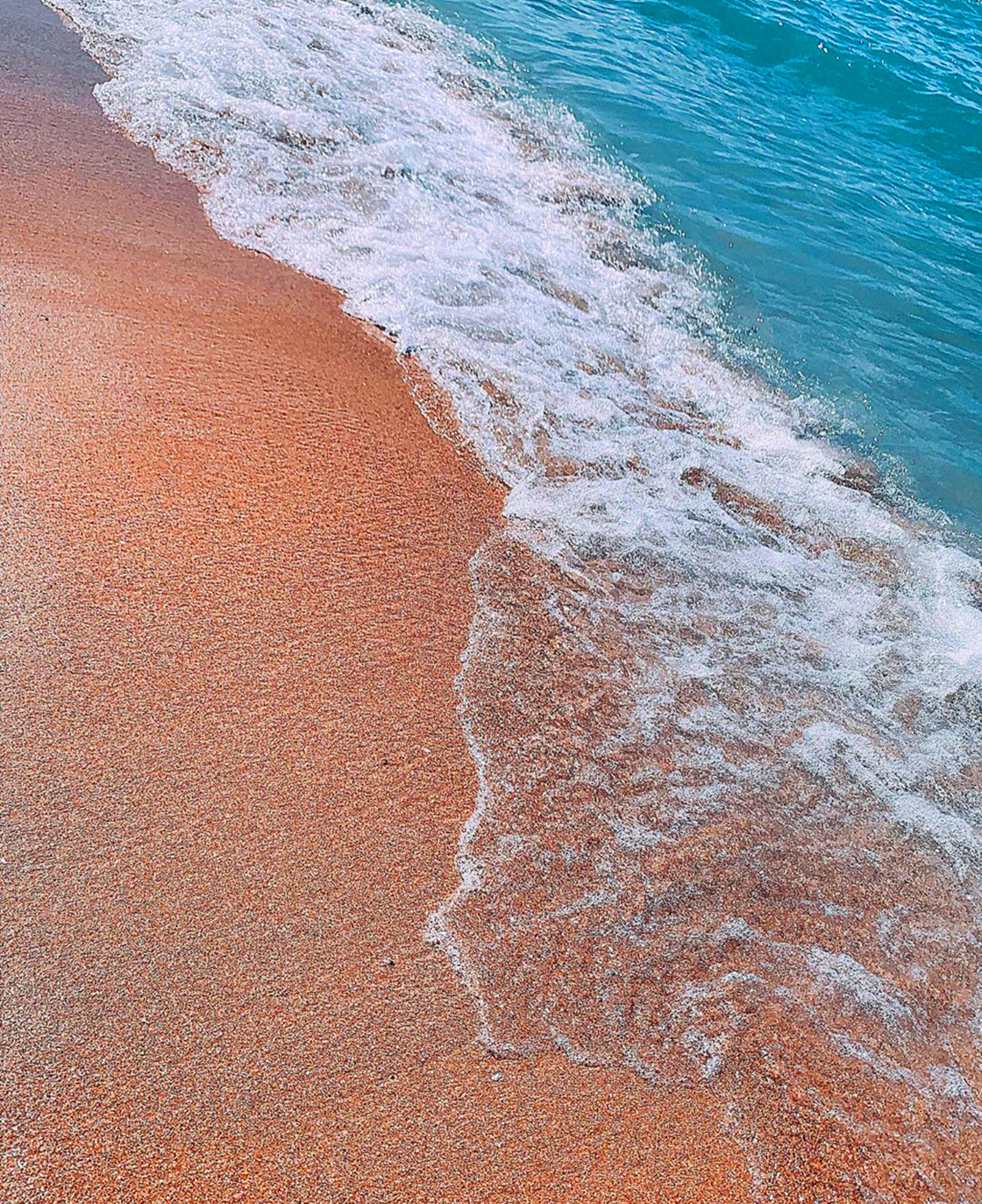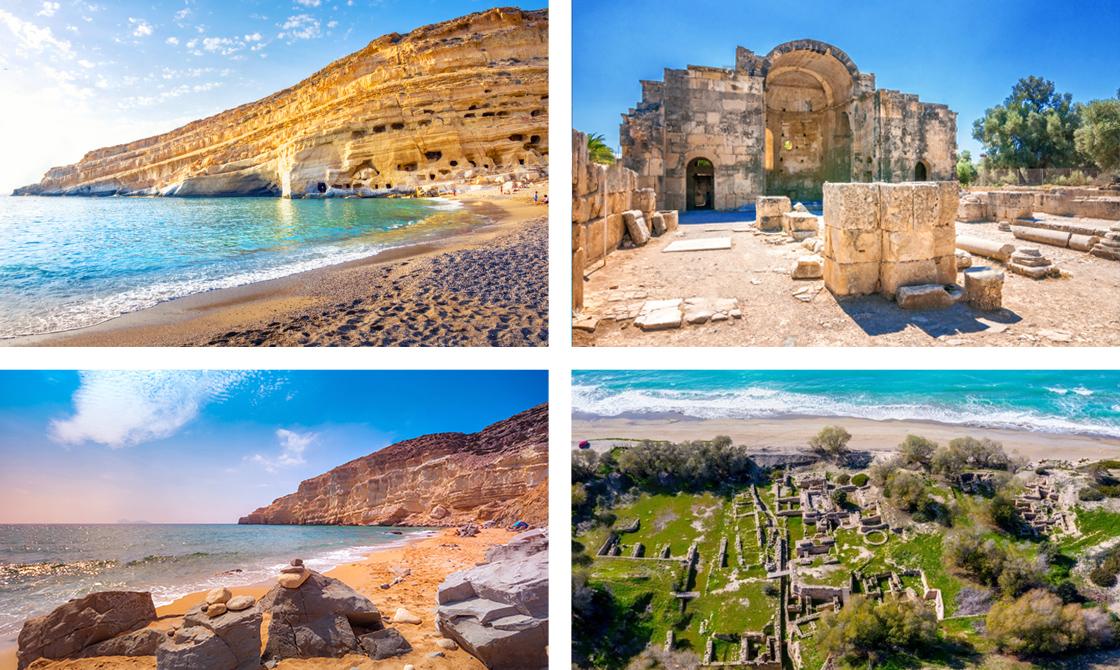
South Crete (Heraklion Prefecture)
Expert travel guide South Crete
Gortyn ancient city
Gortyn or Gortyna was an ancient city and archaeological site today in Crete. According to the ancient Greek mythology, the founder of the city was Gortys from Tegea in Arcadia. Gortyna reached its peak under the Roman Empire, when it became the largest city and capital of the Roman province of "Crete and Cyrenaica" with an estimated population of over 300,000. The city was hit by strong earthquakes in the years 415, 448, 531 and 795, while it was destroyed in 828 AD. by Arab invaders. One of the first Christian churches was built in Gortyna, the cathedral of Agios Titos, the first bishop of Crete. The basilica was built in the 6th century AD. and its ruins are preserved to this day.
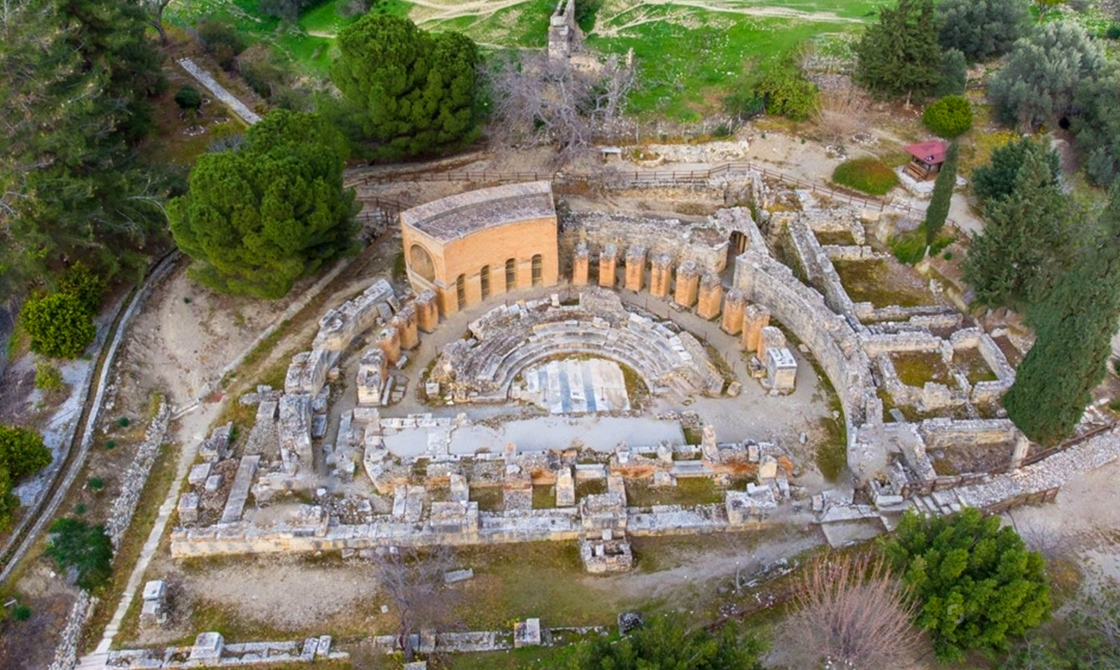
Phaistos Palace
Phaistos was the second most important city of Crete during the second millennium before Christ, after Knossos, and is today an important archeological site. Details about the history of the ancient city came to light after Italian archeological excavations. The city participated in the Achaean campaign against Troy. Phaistos was independent and self-governed and minted many coins depicting Europa seated on a bull and a lion's head with the words PHAESTION THE GLORY. The dynasty founded by Rhadamanthys, son of Zeus, reigned in Phaistos. In Phaistos, the Minoan era begins in 2,600 BC. The first palace was located on the western side of the archeological site, built in 2,000 BC. on successive levels and its walls were built with mudstone. The palace was destroyed by an earthquake in 1730 BC, as was Knossos. A palace, grander than the first one, was built on the site of the ruins. Today you can see ruins of an archeological site from the Bronze Age that includes a Minoan palace and a village. Phaistos is located in the southwest of Heraklion, at a distance of 62 kilometers, at an altitude of 100 meters, south of the Geropotamos river and the ancient Litheos. Under the control of Phaistos were the ancient ports of Matala and Kommos.
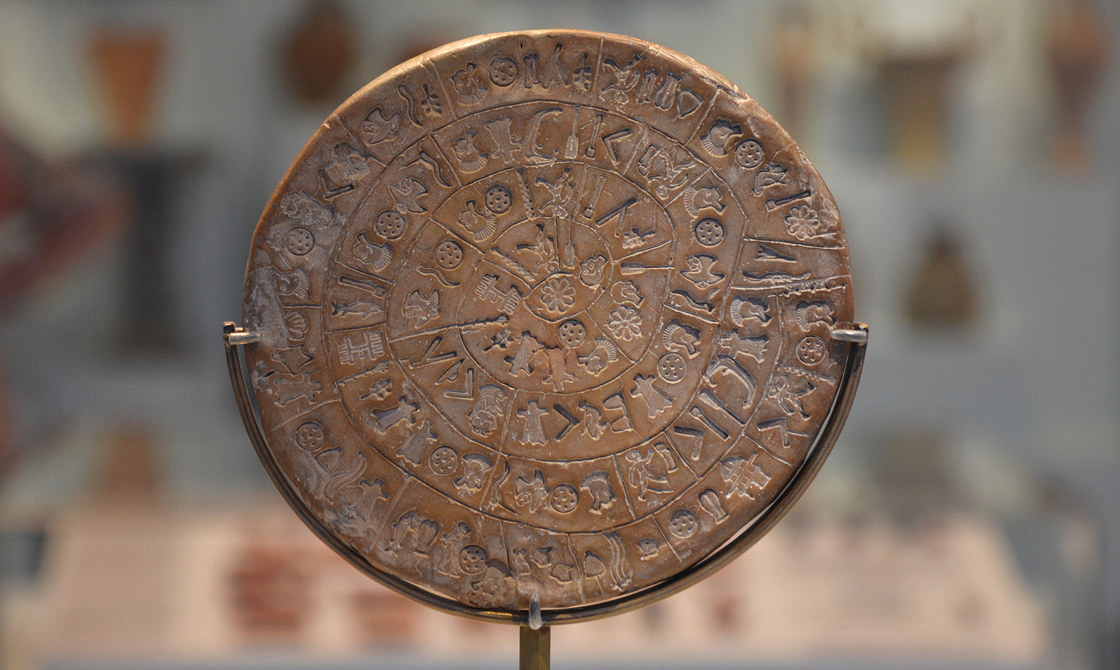
Kommos beach and archeological place
Kommos is an archeological site on the south coast of central Crete. It is located in the municipality of Phaistos of the regional unit of Heraklion, at the southwestern end of the plain of Messara. Whether Kommos is the ancient Cretan city of Amykleion is possible, but not proven. Today, many tourists visit the place for its beautiful beach. The beach of Kommos is huge in area, divided imaginably into two parts. The northern part of the beach, also called Potamos, is one of the largest beaches chosen as a destination by nudists. It is an isolated beach, not at all organized, while there are no hotels or catering facilities around, as this area has been designated as a protected archeological zone. Unlike the northern part, the southern part of the beach is well organized, with umbrellas, sunbeds, showers and a lifeguard. Both parts of the Kommos beach have sand, clear waters and large, smooth rocks in the sea, while, as is the case with all the beaches in the area, the beach is open to the strong westerly winds which cause big waves. This beach is chosen by the Caretta Caretta sea turtles to lay their eggs, during the summer months, while every year the beach is checked by the organization Archelon, the organization that deals with the protection of the sea turtle. If you find yourself in Kommos you can enjoy one of the most enchanting sunsets in Crete, overlooking the islets of Paximadia. Also, you can see Volaka, a huge rock located a few meters from the beach.

Matala village and Red beach
Matala was the port of Phaistos during the Minoan period and of Gortyna during the Roman period. Traces of the ancient settlement can be seen from the sea. Menelaus' ships were wrecked here. Today, Matala is a coastal settlement of the community of Pitsidia of the Municipality of Phaistos in the regional unit of Heraklion, Crete. It belonged to the district of Pyrgiotissa in the prefecture of Heraklion. The beach of Matala has been inhabited since ancient times, while it became famous as a place for hippies to stay in the 60s and 70s. The village was previously a fishing village, while today it lives mainly from tourism.
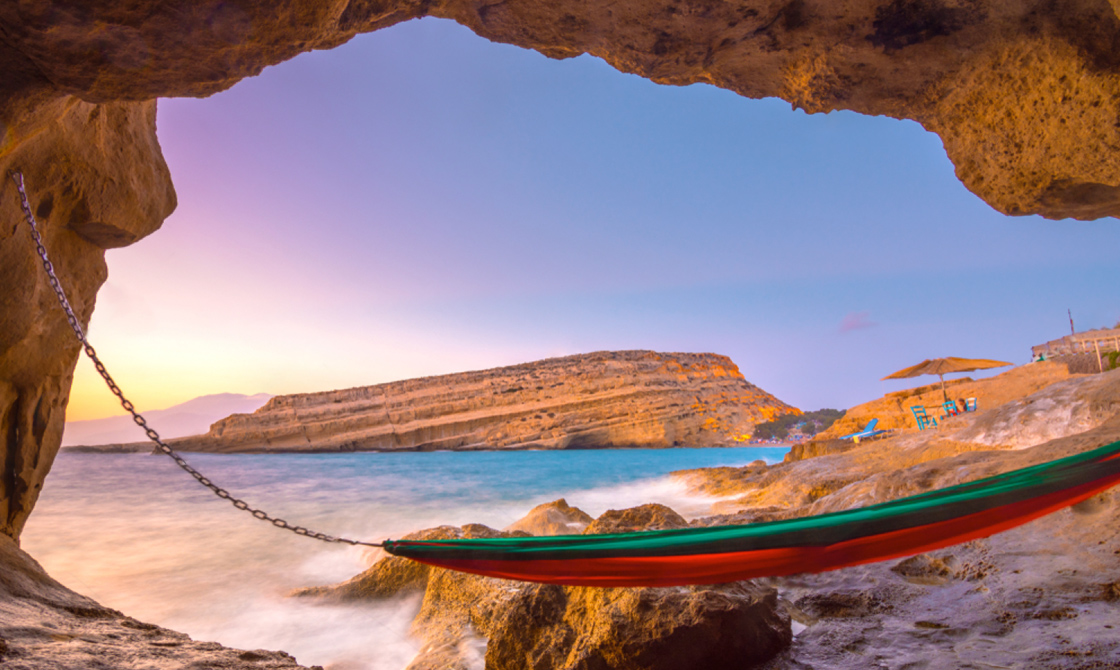
Red beach
Kokkini Ammos (kokkini means red in Greek) beach is located south of Matala. To get to Kokkini Ammos beach you can walk the path that starts through Matala or reach it by boat. On the high rocks surrounding the beach to the north, there is a sea cave that you can explore if you are not afraid of black waters and a claustrophobic feeling. You should also know that Kokkini Ammos is a nudist beach, but not exclusively. Usually nudists are the minority, but they do exist.
